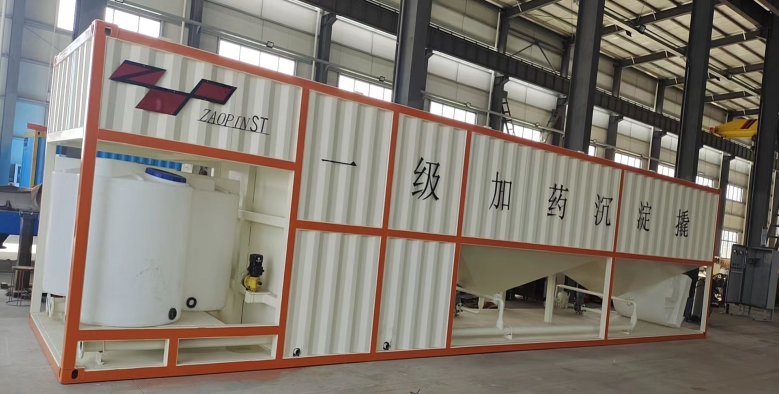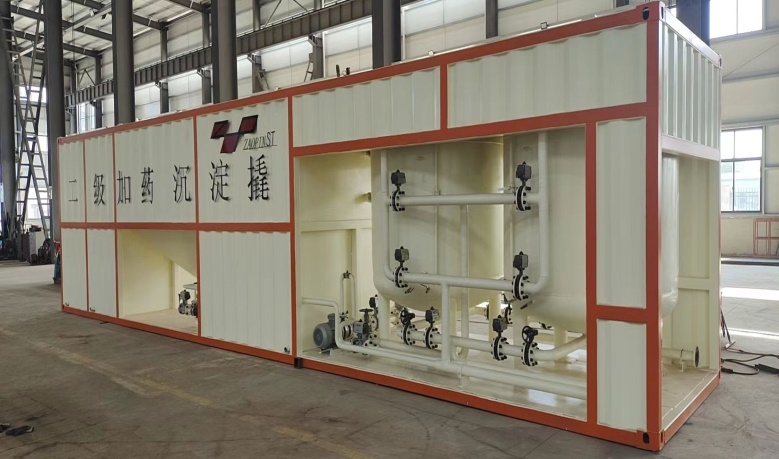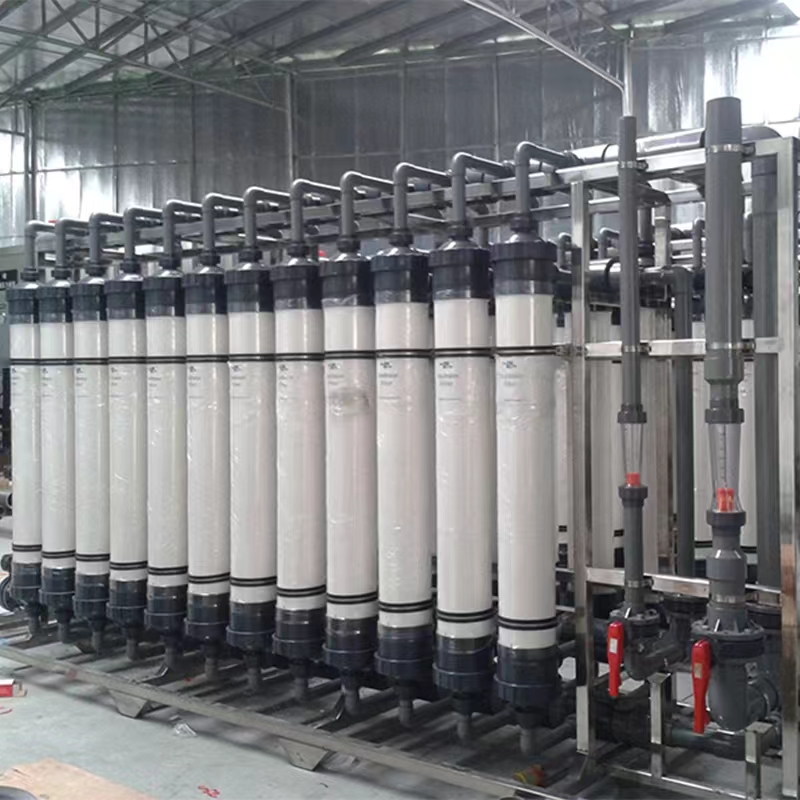
1、Work Process

2、Process Introduction
2.1 Conditioning Tank Unit
Adjusting the quality and quantity of influent water to achieve balanced influent.
2.2 First Class-Chemical Addition, Flocculation, And Sedimentation Unit
The addition of magnetic powder along with BAC (or other coagulants such as PAC, based on preliminary test results) is being considered. This is because the dissolved oxygen in the discharged water needs to reach 0.01mg/L (virtually absent). Alternatively, chemical addition followed by mixing and gravity sedimentation process might also be suitable. The supernatant will be directed to the next treatment unit, while the sludge will be transferred to the sludge storage tank for pressure filtration.

2.3 Second Class- Dual-Alkali Chemical Addition For Calcium Removal Softening Unit
Considering the calcium ion content in the raw water, chemical calcium removal softening is necessary to protect subsequent membrane treatments. Additionally, under alkaline conditions, other pollutants such as iron ions can also be partially removed. Hence, a secondary chemical addition process is deemed necessary. The initial choice for chemical addition includes sodium carbonate and sodium hydroxide. Solid-liquid separation can be achieved through multiple quartz sand filters. The filtered liquid will be directed to the next treatment unit, while the backwash water will be transferred to the sludge storage tank for pressure filtration.

2.4 Multi-Media Sand Filtration Unit
Due to the uncertainty of the raw water quality and the strict requirements for total iron (Fe) and other contaminants, it is initially considered to incorporate various types of sand filters, including manganese sand filters (for iron removal), activated carbon filters (for color removal), and sponge iron filters (for oxygen removal). While the tank bodies are essentially the same, the internal filter media differ, and their selection will be based on the results of small-scale tests and the actual situation. The filtered liquid will be directed to the next treatment unit, while the backwash water will be transferred to the sludge storage tank for pressure filtration.
2.5 Pressure-Driven Ultrafiltration Membrane Process
Utilizing UF2880 ultrafiltration membrane columns with modular assembly for convenient replacement and operation. The filtered liquid will be directed to the next treatment unit, while the backwash water will be transferred to the sludge storage tank. The membranes boast high flux to ensure suspended solids (SS) compliance.

2.6 Deoxygenation unit
Chemical deoxygenation is necessary to achieve a dissolved oxygen level of 0.01mg/L in the discharged water. Typically, deoxygenating agents are recommended for this purpose, with a dosage of approximately 300 grams per ton of water. A dosing and mixing mechanism will be employed, subject to confirmation through small-scale testing.
Name: General Manager
Mobile:Wechat:+86 18857127993
Tel:+86 18857127993
Whatsapp:+86 18857127993
Email:zaopinst@gmail.com
Add:10th to 11th floors, Building 1, No. 398 Haida North Road, Xiasha Street, Qiantang District, Hangzhou City, Zhejiang Province